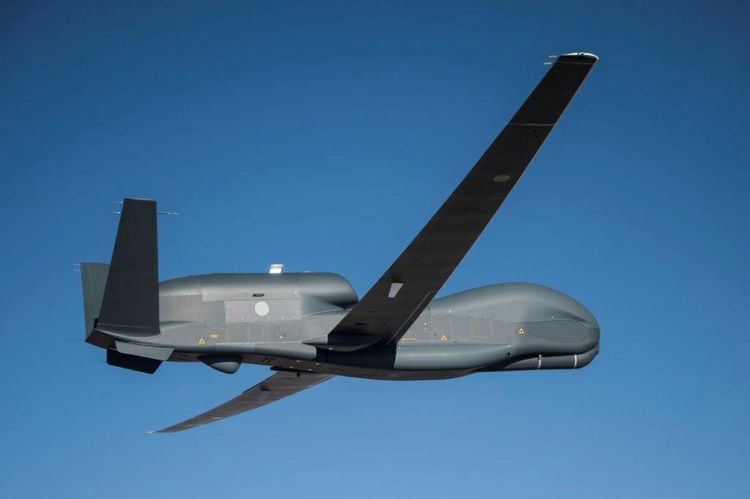The first Northrop Grumman RQ-4B Global Hawk drone for the Japan Air Self-Defense Force has carried out its maiden flight.
On Apr. 15, 2021, the first RQ-4B Global Hawk UAV (Unmanned Air Vehicle) destined to the JASDF (Japan Air Self-Defense Force) successfully completed its first flight from Northrop Grumman plant at Palmdale, California.
“The unarmed RQ-4B Global Hawk will provide Japan with on-demand intelligence, surveillance and reconnaissance information supporting the Japan Air Self-Defense Force’s missions of protecting borders, monitoring threats and providing humanitarian assistance in times of need,” said Jane Bishop, vice president and general manager, autonomous systems, Northrop Grumman, in a public release. “This successful first flight is a significant milestone in delivering Global Hawk to our Japanese allies.”
Japan’s decision to procure dates back to November 2014, when the Japanese MOD officially selected the RQ-4 over the General Atomics Guardian-ER. The U.S. Department of State approved the potential sale of three RQ-4 Block 30 (I) Global Hawk and associated equipment, including three Enhanced Integrated Sensor Suites and 16 navigation systems, worth up to 1.2B USD. The contract, worth 489.9M USD, was eventually awarded to NG by the Air Force Life Cycle Management Center, Wright-Patterson Air Force Base, Ohio, in 2018, and will deliver three RQ-4 Global Hawks, two ground control stations, spare parts, and related services by September 2022.
“Once fielded, Global Hawk will integrate with other Japanese intelligence assets, including ground-based command and control units. The capability will provide solutions to monitor and deter regional threats to ensure Japan has a highly effective national security posture well into the future”, Northrop Grumman says.
The RQ-4 Global Hawk is a HALE (high-altitude, long-endurance) RPA (remotely piloted aircraft) with an integrated sensor suite that provides global all-weather, day or night intelligence, surveillance and reconnaissance (ISR) capability.
The Global Hawk provides persistent near-real-time coverage using imagery intelligence (IMINT), signals intelligence (SIGINT) and moving target indicator (MTI) sensors. RQ-4s carry out ISR (Intelligence Surveillance Reconnaissance) missions in various hotspots across the world. As we write this article, a U.S. Air Force Global Hawk from NAS Sigonella, Italy, can be tracked online as it performs yet another RQ-4 sortie near Crimea, over Ukraine and the Donbass area.
“Block 30 [the one destined to Japan] is a multi-intelligence platform that simultaneously carries electro-optical, infrared, synthetic aperture radar (SAR), and high and low band SIGINT sensors,” says the USAF website. “Block 30 Initial Operating Capability (IOC) was declared in August 2011. Eighteen Block 30s are currently fielded, supporting every geographic combatant command as well as combat missions in Operations Enduring Freedom and Iraqi Freedom/ New Dawn. Block 30s also supported Operation Odyssey Dawn in Libya and humanitarian relief efforts during Operation Tomodachi in Japan. Block 40 carries the Radar Technology Insertion Program (RTIP) active electronically scanned array radar which provides MTI and SAR data.”









